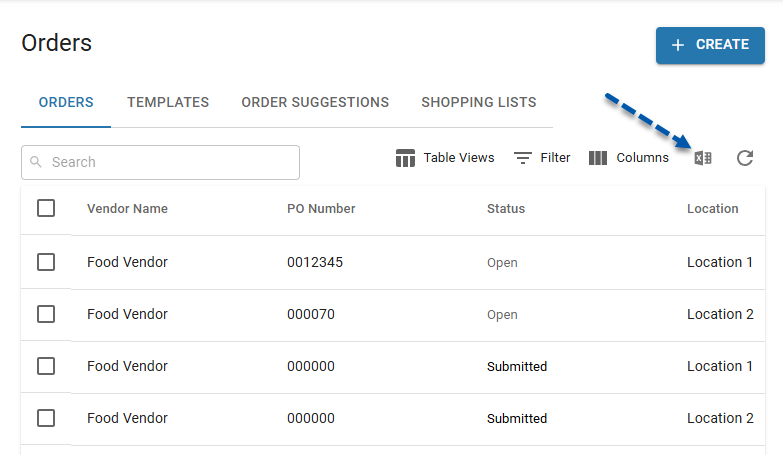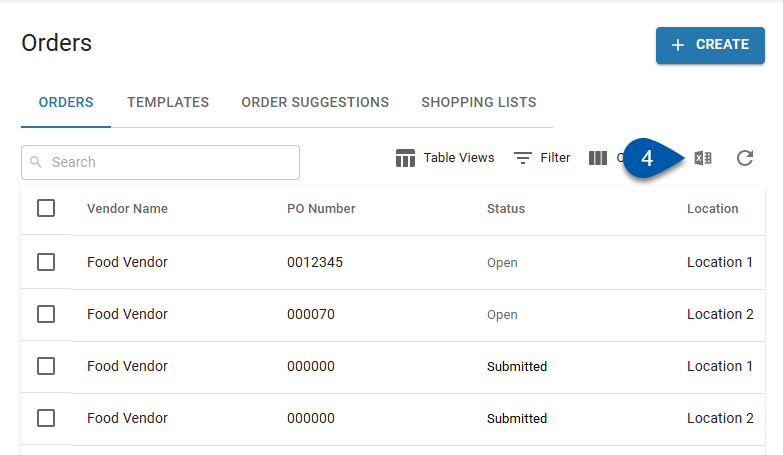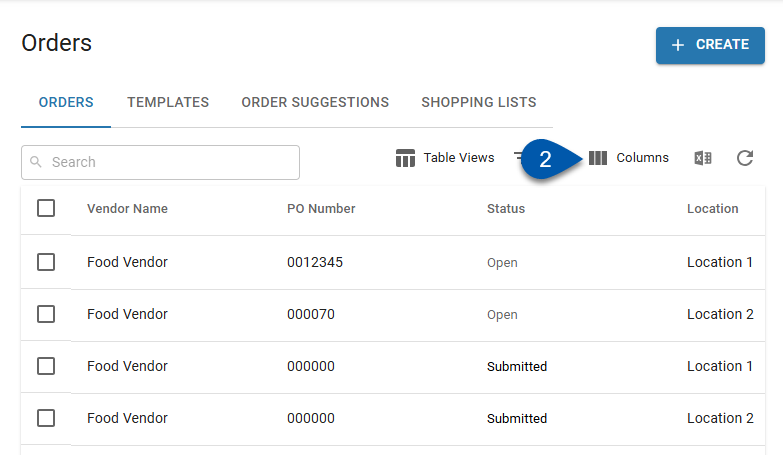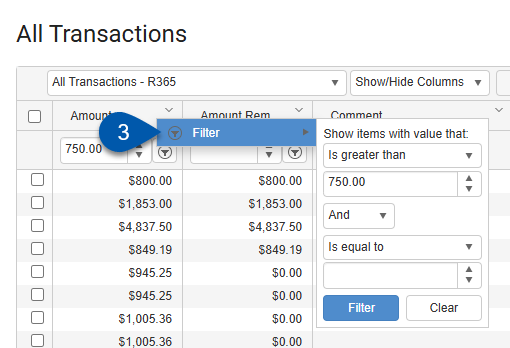Throughout R365, data displayed in grids can be exported to a .csv file. Only rows matching applied filters and selected columns will be exported.
Learn more about standard grid functions and working with classic grids.
Security
The export grid function does not require specific user permissions. Users can only export data that they have permission to view.
Refer to the documentation for the page or record with the grid being exported for additional security information.
Export Data From Standard Grids
Follow these steps to export data from a standard grid:
Click steps to expand for additional information and images.
1) Navigate to the desired grid.
Only grids with the Export button can be exported. The Export button is found above the grid, along with other grid controls.

2) Adjust columns. Only selected columns will be exported. (Optional)
3) Apply or clear filters. Only rows that match applied filters will be exported. (Optional)
4) Click the Export button.
The .csv file will be queued for download. See documentation for your bowser for additional information on accessing queued downloads.

Export Data From Classic Grids
Follow these steps to export data from a classic grid:
Click steps to expand for additional information and images.
1) Navigate to the desired grid.
Only grids with the Export button can be exported. The Export button is found above the grid, along with other grid controls.

2) Adjust columns. Only selected columns will be exported. (Optional)
Click the Show/Hide Columns button to show or hide grid columns.
Learn more about working with classic grids.

3) Apply or clear column filters. Only rows that match applied filters will be exported. (Optional)
4) Click the Export button.
The .csv file will be queued for download. See documentation for your bowser for additional information on accessing queued downloads.



